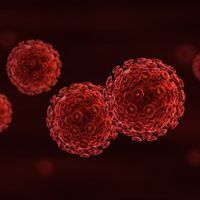Learning from Bacteria to Fight HIV
Study results published in the March 10, 2015 issue of Nature Communications indicate that customizing a defense system used by bacteria and archaea to recognize HIV has brought researchers one step closer to creating a drug that could prevent HIV, treat patients already infected with HIV, and even remove dormant copies of the virus from patients with more advanced disease.

Study results published in the March 10, 2015 issue of Nature Communications indicate that customizing a defense system used by bacteria and archaea to recognize HIV has brought researchers one step closer to creating a drug that could prevent HIV, treat patients already infected with HIV, and even remove dormant copies of the virus from patients with more advanced disease.
“Evolution has led to some of the most astonishing mechanisms for protecting organisms against their natural pathogens,”saidSenior Author Juan Carlos Izpisua Belmonte, PhD, a professor from the Gene Expression Laboratory at the SalkInstitute for Biological Studies in La Jolla, CA. “Understanding the immune responses by which bacteria protect themselves against viral infections has allowed us to engineer novel platforms for the targeting of devastating viruses, such as HIV, in human patients.”
According to co-author Hsin-Kai (Ken) Lia, PhD, a research associate in the Izpisua Belmonte Lab at the Salk Institute, existing HIV drugs that target individual steps in the life cycle of the virus fall short of the ultimate goal. The problem, he explained, is that these agents do not actually remove copies of the virus that remain dormant within cells’ DNA for years before activating again.
"Patients normally need to [take] drugs every day or every week for their whole lives, because of the HIV that can be latent,” said Liao. “This costs money, time, and effort.”
To address this issue, the Salk Institute research team explored the unique antiviral defense system used by bacteria and archaea to combat hostile viruses that is composed of clustered regularly interspaced short palindromic repeats (CRISPRs), together with CRISPR-associated genes (Cas). The CRISPR/Cas9 system develops and adaptive immune resistance to foreign plasmid and viruses by creating site-specific DNA double-stranded breaks. Whereas the system has been used since its recent discovery to edit genes, Izpisua Belmonte and colleagues were more interested in its defensive ability and hypothesized that it could be programmed to cut up and destroy viruses inside human cells.
With the knowledge that CRISPR uses guide RNAs to dictate its cuts, the researchers developed guide RNAs that bound to unique spots on HIV and added CRISPR, the guide RNAs, and other essential molecules needed for the CRISPR/Cas9 systems to work to immune cells that that been infected with HIV. Their results demonstrated that the CRISPR/Cas9 system disrupted latently integrated viral genome and provided long-term adaptive defense against viral infection, expression, and replication in human cells. “We show that engineered human-induced pluripotent stem cells stably expressing HIV-targeted CRISPR/Cas9 can be efficiently differentiated into HIV reservoir cell types and maintain their resistance to HIV-1 challenge,” they wrote. In other words, CRISPR successfully cut the right spots in HIV’s genes, thus inactivating the virus and completely removing it from up to 72% of cells. The system cut up loose copies of the virus as they infected the cell as well as any HIV lying dormant within the cells’ DNA
“CRISPR can actually excise the virus out of the human genome,” said Liao.
Adding to Liao’s comments, Izpisua Belmonte said, “The main advantage of this technology is not only that viral DNA integrated into the human genome can be eliminated but perhaps, most importantly, the prophylactic application. By eliminating the virus at the early steps of its life cycle, we can altogether prevent the infection of human cells in an analogous manner to how conventional vaccines work.”
The study investigators admit that additional work is needed to determine if the system could be used in human patients and whether HIV will evolve to escape the CRISPR/Cas9 system. They are currently studying the effectiveness of adding more guiding RNAs to the adapted system so that the defense simultaneously recognized more areas of the virus. “The HIV virus can mutate very quickly,” said Liao. “If we target multiple regions at the same time, we reduce the chance that the virus can develop resistance.”